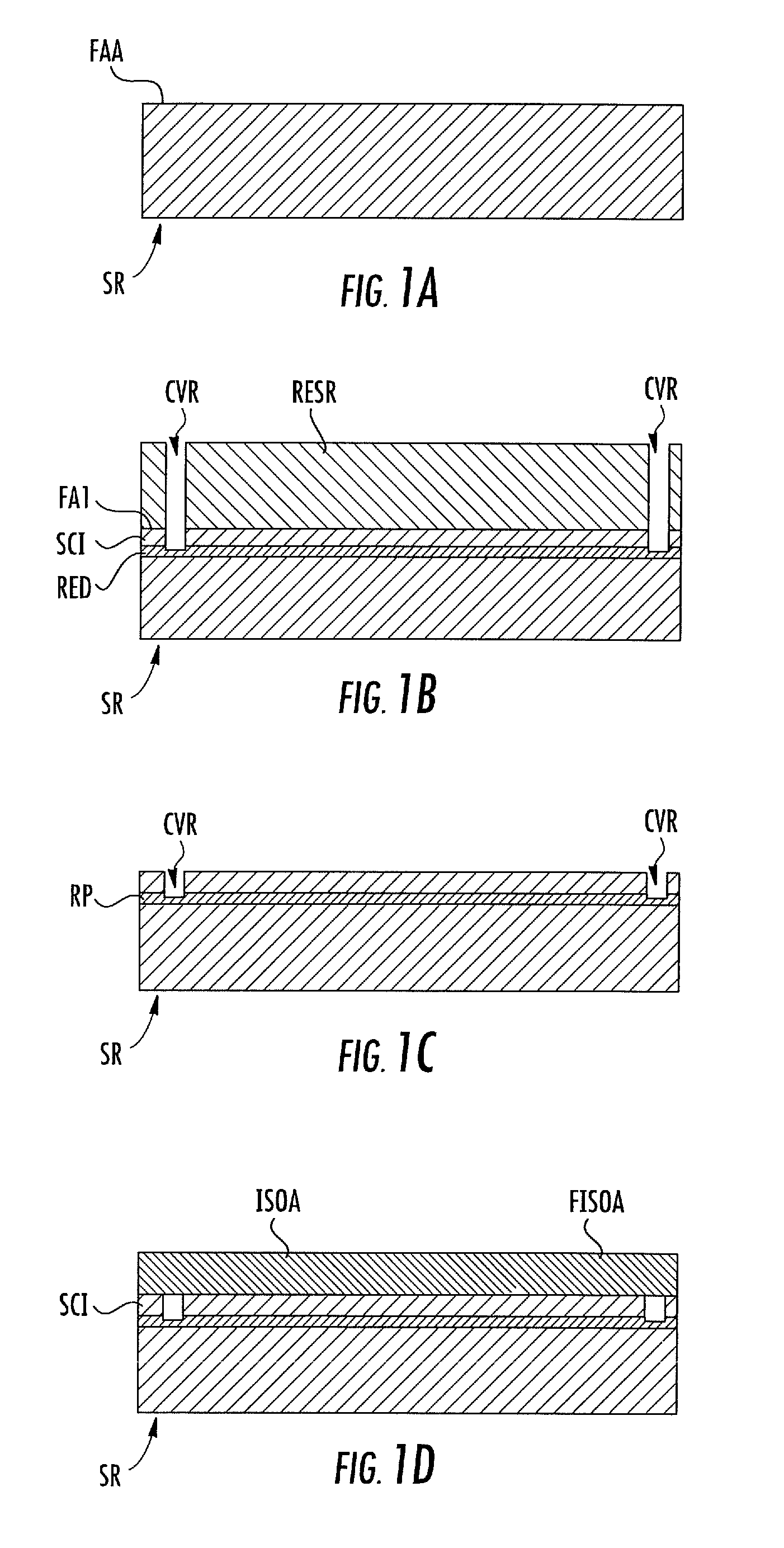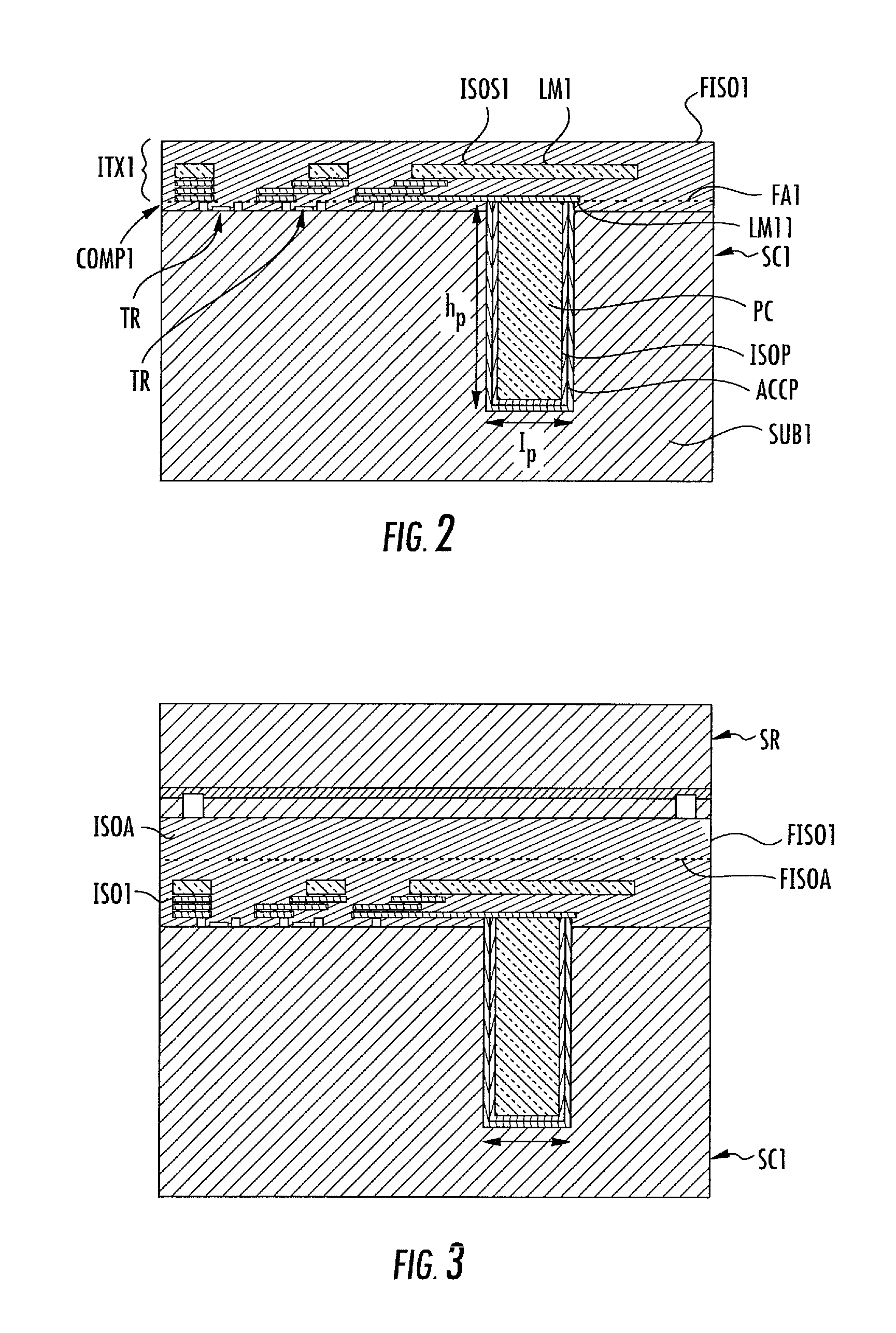Method for formation of an electrically conducting through via
a technology of electrical conductance and via, which is applied in the direction of electrical apparatus, semiconductor devices, and testing/measurement of semiconductor/solid-state devices, etc., can solve the problems of difficult to implement fabrication steps at high temperatures, damage to integrated circuits, and approach may have temperature limitations, so as to achieve easy fracture
- Summary
- Abstract
- Description
- Claims
- Application Information
AI Technical Summary
Benefits of technology
Problems solved by technology
Method used
Image
Examples
Embodiment Construction
[0026]With reference to FIGS. 1A, 1B, 1C and 1D, the steps for fabrication of a handle within a rigid support SR will be described. The rigid support SR can, for example, be a semiconductor wafer comprising silicon, and its thickness can be on the order of several hundred micrometers, for example, 700 micrometers. Furthermore, a silicon wafer having a doping of the n type (producing an excess of electrons) can be used.
[0027]A step for implantation of atoms, for example, of boron, can be implemented from the face FAA of the support SR (FIG. 1B). The parameters of this implantation step (energy, temperature, duration, etc.) are chosen to obtain a buried doped region RED under an intermediate semiconductor layer SCI having a thickness of around 20 micrometers. Cavities CVR, here shown to be two in number, are then formed during a photolithographic step in which a photoresist RESR is opened up to form the cavities CVR which pass through the layer SCI and open into the buried doped regio...
PUM
 Login to View More
Login to View More Abstract
Description
Claims
Application Information
 Login to View More
Login to View More - R&D
- Intellectual Property
- Life Sciences
- Materials
- Tech Scout
- Unparalleled Data Quality
- Higher Quality Content
- 60% Fewer Hallucinations
Browse by: Latest US Patents, China's latest patents, Technical Efficacy Thesaurus, Application Domain, Technology Topic, Popular Technical Reports.
© 2025 PatSnap. All rights reserved.Legal|Privacy policy|Modern Slavery Act Transparency Statement|Sitemap|About US| Contact US: help@patsnap.com



